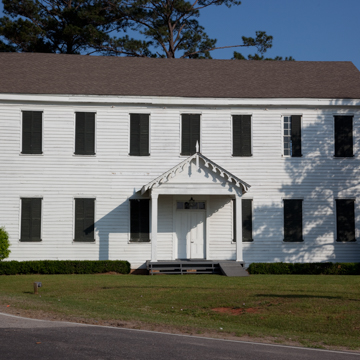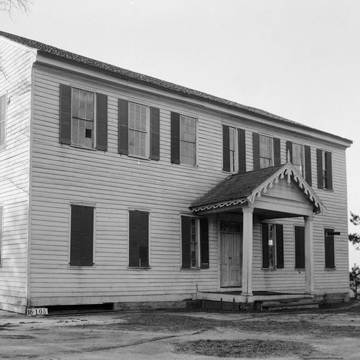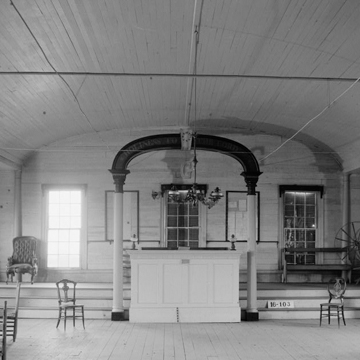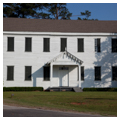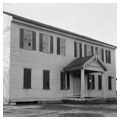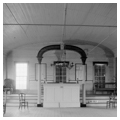You are here
Masonic Lodge
Fraternal lodges were a pervasive typology in nineteenth-century America, and in many early settlements they doubled as churches and sometimes as schools. In Alabama’s fledgling towns, the Masonic Hall was often one of the most architecturally distinguished and substantial buildings. Dated to the mid-1820s, the Perdue Hill Masonic Lodge is the oldest fraternal structure in the state and one of Alabama’s oldest institutional buildings of any kind.
The lodge was originally built in the nearby community of Claiborne, then a thriving new inland port atop high bluffs overlooking the Alabama River, with rich cotton lands spreading toward the horizon. Tradition holds that the Marquis de Lafayette dedicated the structure in April 1825, during his famous farewell tour of America. Whether this is true or not, the importance attached to the event underscores Freemasonry’s significance at that time. John Parks supervised the construction of the frame, gabled structure, which measures roughly 35 by 60 feet.
Even before the Civil War, economic and demographic changes resulted in Clairborne’s gradual abandonment. Today, it is one of Alabama’s ghost towns. In 1884, the Masonic Lodge, one of Claiborne’s few remaining buildings, was moved two miles south to the crossroads village of Perdue Hill. As communities waxed and waned in nineteenth-century Alabama, buildings were often relocated to follow shifts in the population. Structures were moved in whole, in part, or even disassembled—traditional braced framing lent itself to this—in order to reconstruct them elsewhere.
Both the exterior and interior of the building remain largely unaltered. A small porch sheltering the main entrance, its gable festooned with an unexpectedly ornate scroll-sawn bargeboard, was probably added when the Masonic Lodge was moved. Nine-over-nine windows, thirty-eight in number above and below, illuminate the interior. But for two small rooms at the south end—one of them containing a simple stair—an assembly room occupies the entire first floor. The plan is repeated on the second floor, where the original lodge room is intact along with some of its symbolic accoutrements. Covering the center of the room is an elliptical barrel vault, fashioned in wood and carried on a double row of turned colonnettes, five to a side. At the north end before a raised dais, a freestanding elliptical arch, upheld by a pair of fluted colonnettes, repeats the curvature of the ceiling.
Today, no longer used by the Masons, the structure is maintained by the community as an historical landmark.
References
Gamble, Robert. The Alabama Catalog: Historic American Building Survey. Guide to the Early Architecture of the State. Tuscaloosa: University of Alabama Press, 1986.
Writing Credits
If SAH Archipedia has been useful to you, please consider supporting it.
SAH Archipedia tells the story of the United States through its buildings, landscapes, and cities. This freely available resource empowers the public with authoritative knowledge that deepens their understanding and appreciation of the built environment. But the Society of Architectural Historians, which created SAH Archipedia with University of Virginia Press, needs your support to maintain the high-caliber research, writing, photography, cartography, editing, design, and programming that make SAH Archipedia a trusted online resource available to all who value the history of place, heritage tourism, and learning.














